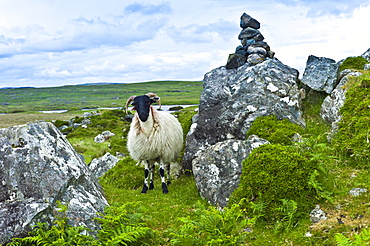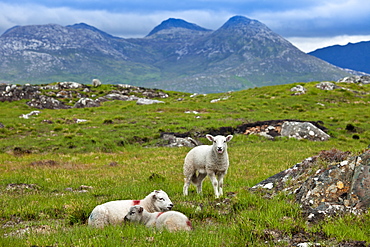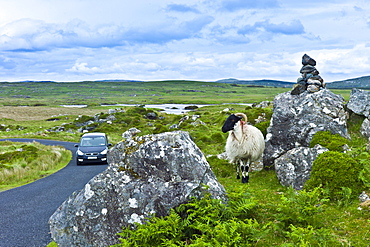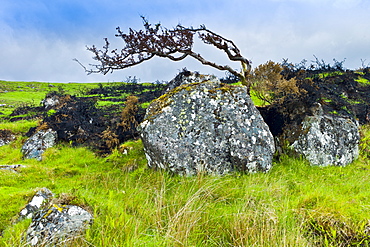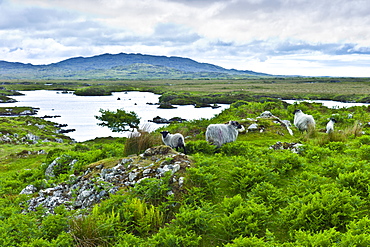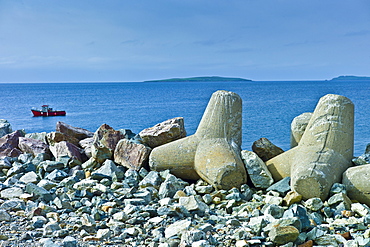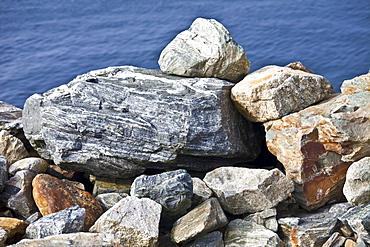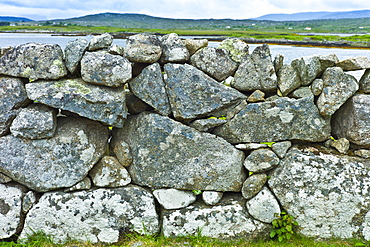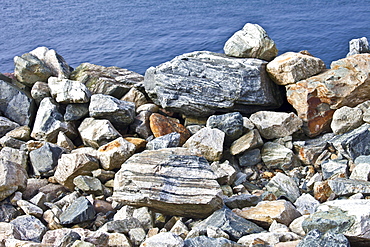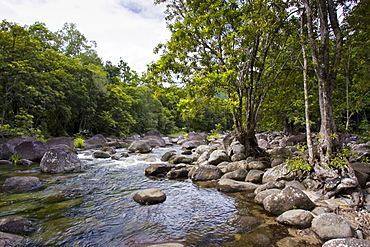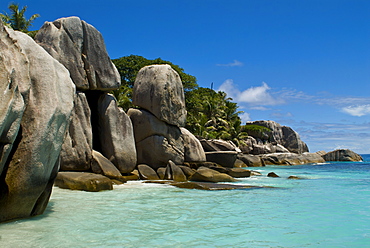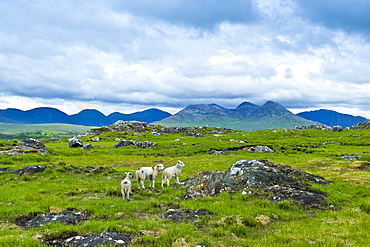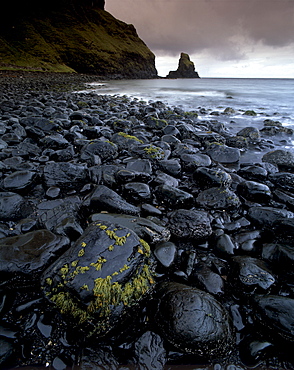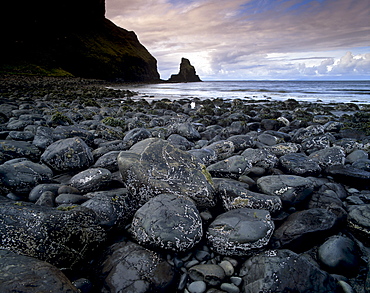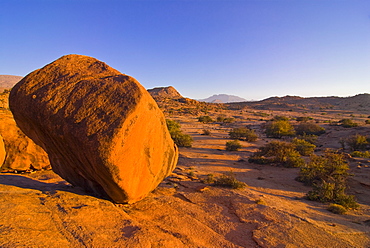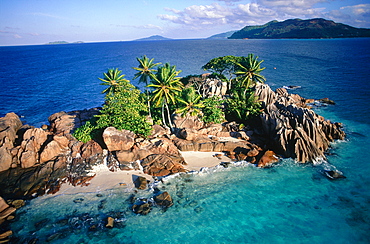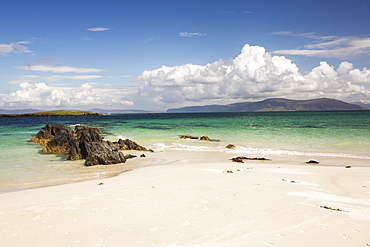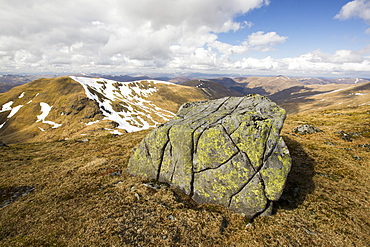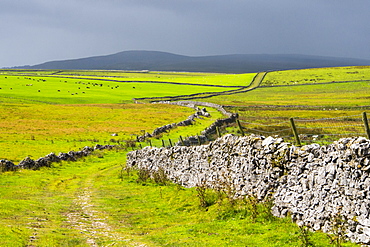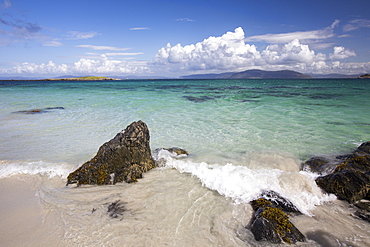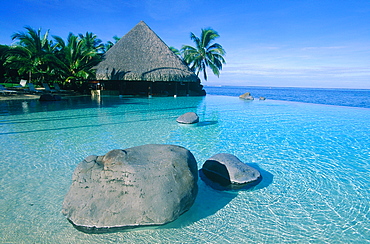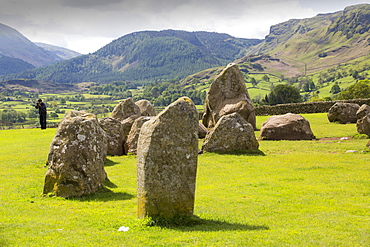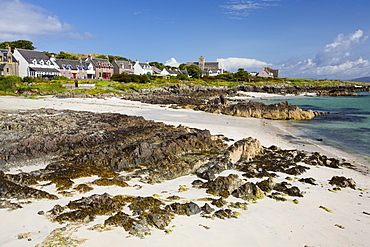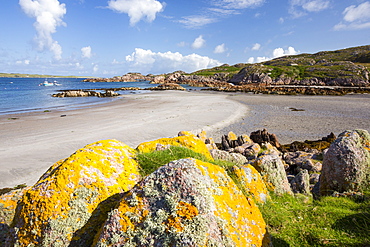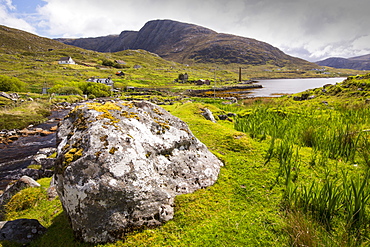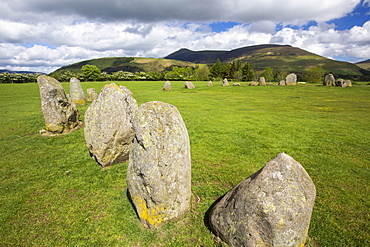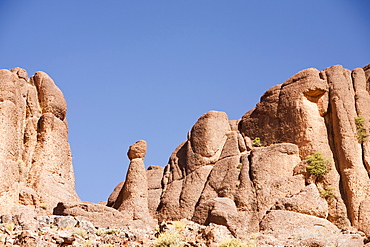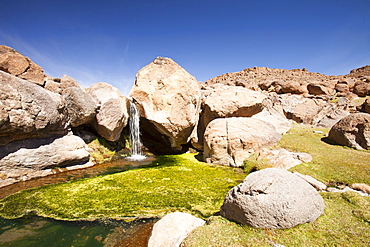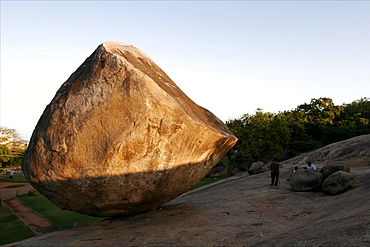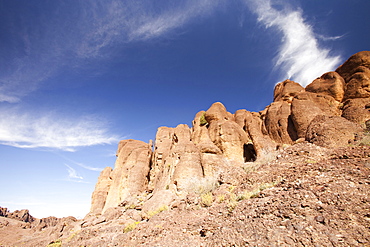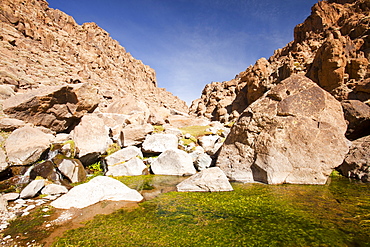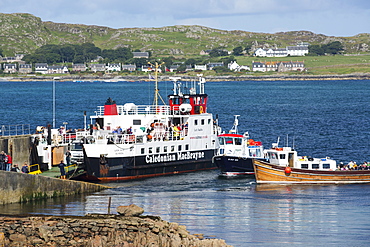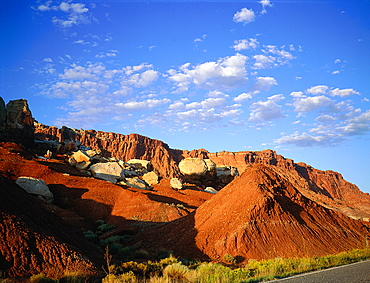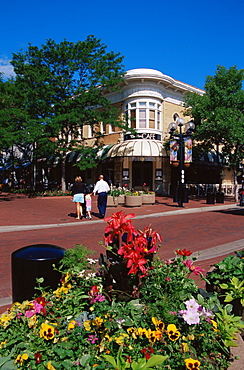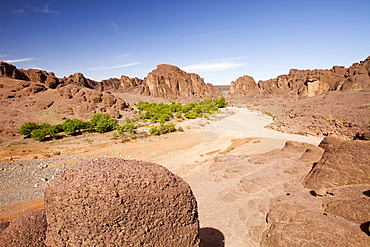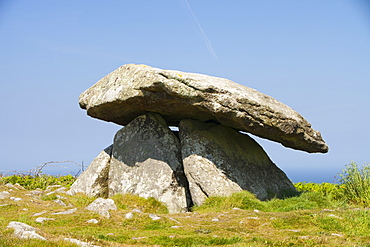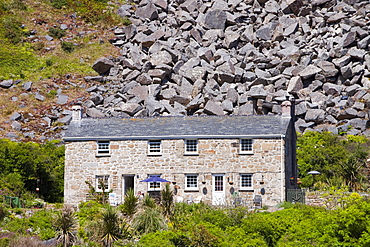Results
« Previous 1 … 3 4 5
412 results found

Bureau of Land Management, Three Rivers Petroglyph Site, rock carvings created by the Jornada Mogollon people during the 15th century, New Mexico, United States of America, North America
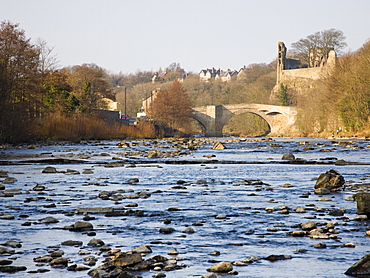
View along the boulder-strewn River Tees to the ruined castle and 16th century County Bridge, Barnard Castle, County Durham, England, United Kingdom, Europe
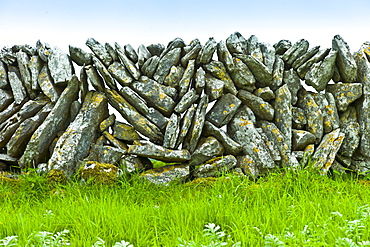
Traditional dry stone wall, vertical sloping stones, in field in The Burren, County Clare, West of Ireland
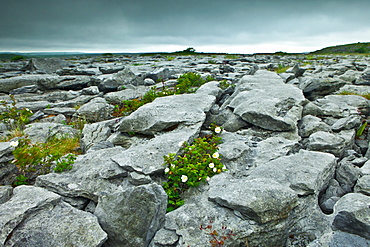
Limestone pavement glaciated karst landscape and native flora in The Burren, County Clare, West of Ireland

Drought and dried up riverbed of the Rio Saja, Saja River, at Barcenillas in Valle de Cabuerniga, Cantabria, Spain
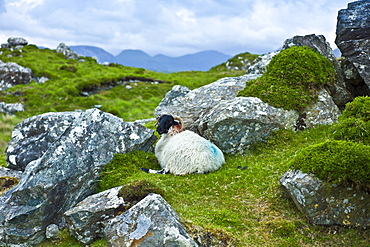
Mountain sheep ram sheltering among rocks on the Old Bog Road near Roundstone, Connemara, County Galway
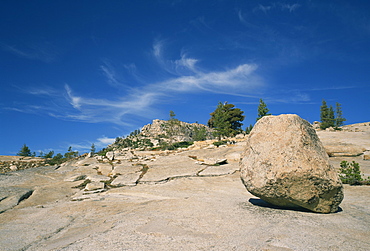
Boulder on rocky arid landscape in the Tioga Pass area of Nevada, United States of America, North America
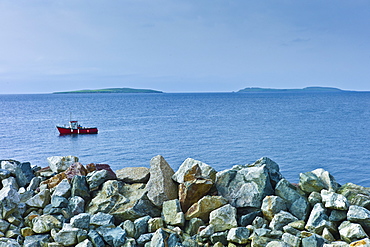
Fishing boat with Saltee Islands in background and sea defences, Kilmore, County Wexford, Southern Ireland
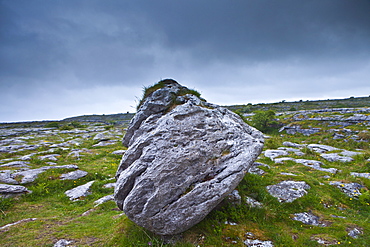
Ancient prehistoric stone boulder and bare limestone pavement, The Burren, County Clare, West of Ireland

Barn owl (Tyto alba) in captivity on hay bales, Boulder County, Colorado, United States of America, North America

Eurasian eagle owl (Bubu bubo) in captivity, Boulder County, Colorado, United States of America, North America
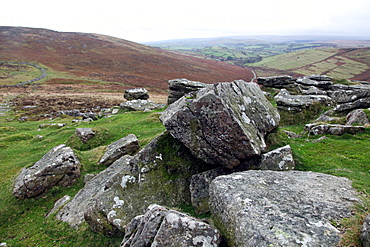
Rocks at the summit of Hookney Tor, looking down the Challacombe valley, Dartmoor, Devon, England, United Kingdom, Europe

Barred owl (Strix varia) on fence, in captivity, Boulder County, Colorado, United States of America, North America
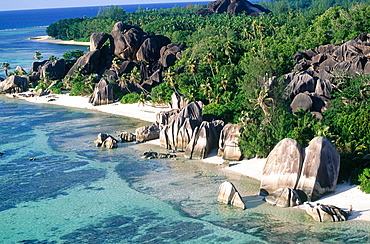
Seychelles, La Digue Island, Aerial Of Source D'argent (Silverspring) Beach Characterized By Huge Basaltic Rocks And Turquoise Lagoon
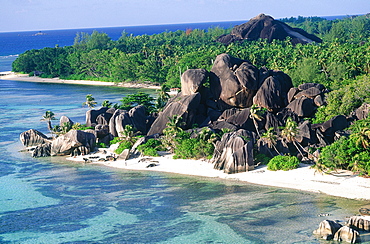
Seychelles, La Digue Island, Aerial Of Source D'argent (Silverspring) Beach Characterized By Huge Basaltic Rocks And Turquoise Lagoon
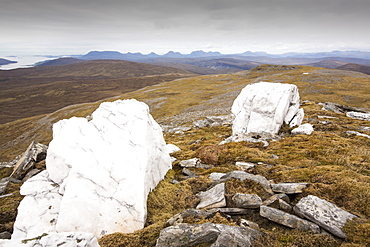
Looking towards the Assynt hills taken from Eididh nan Clach Geala, Highlands, Scotland, UK, with large quartz boulders in the foreground.
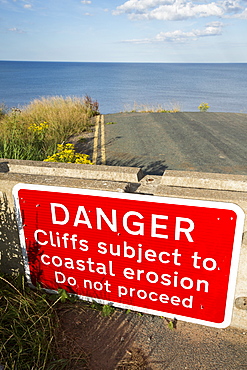
A collapsed coastal road near Skipsea on Yorkshires East Coast, UK. The coast is composed of soft boulder clays, very vulnerable to coastal erosion. This sectiion of coast has been eroding since Roman times, with many villages having disappeared into the sea, and is the fastest eroding coast in Europe. Climate change is speeding up the erosion, with sea level rise, increased stormy weather and increased heavy rainfall events, all playing their part.
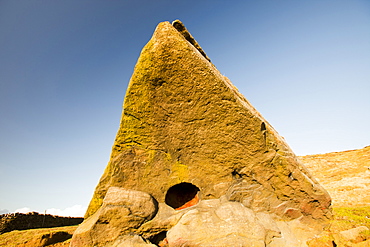
A boulder of millstone grit on Ilkley moor with a perfect circular hole probably formed by a large inclusion weathered out of the bedrock, West Yorkshire, England, United Kingdom, Europe
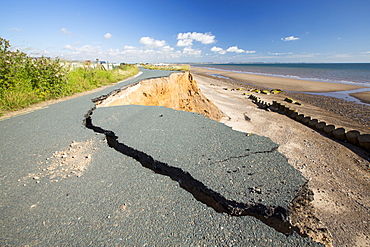
A collapsed coastal road at between Skipsea and Ulrome on Yorkshires East Coast, near Skipsea, UK. The coast is composed of soft boulder clays, very vulnerable to coastal erosion. This sectiion of coast has been eroding since Roman times, with many villages having disappeared into the sea, and is the fastest eroding coast in Europe. Climate change is speeding up the erosion, with sea level rise, increased stormy weather and increased heavy rainfall events, all palying their part.
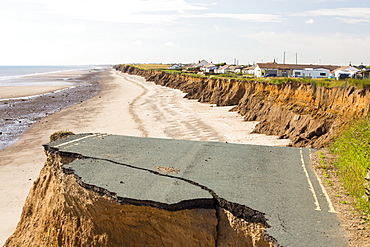
A collapsed coastal road at between Skipsea and Ulrome on Yorkshires East Coast, near Skipsea, UK. The coast is composed of soft boulder clays, very vulnerable to coastal erosion. This sectiion of coast has been eroding since Roman times, with many villages having disappeared into the sea, and is the fastest eroding coast in Europe. Climate change is speeding up the erosion, with sea level rise, increased stormy weather and increased heavy rainfall events, all palying their part.

A collapsed coastal road at Easingotn on Yorkshires East Coast, near Skipsea, UK. The coast is composed of soft boulder clays, very vulnerable to coastal erosion. This sectiion of coast has been eroding since Roman times, with many villages having disappeared into the sea, and is the fastest eroding coast in Europe. Climate change is speeding up the erosion, with sea level rise, increased stormy weather and increased heavy rainfall events, all palying their part.
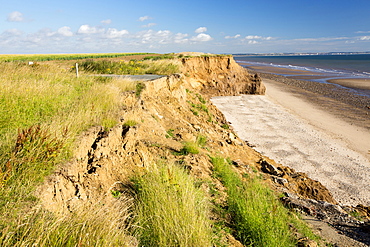
A collapsed coastal road at near Aldbrough on Yorkshires East Coast, near Skipsea, UK. The coast is composed of soft boulder clays, very vulnerable to coastal erosion. This sectiion of coast has been eroding since Roman times, with many villages having disappeared into the sea, and is the fastest eroding coast in Europe. Climate change is speeding up the erosion, with sea level rise, increased stormy weather and increased heavy rainfall events, all palying their part.
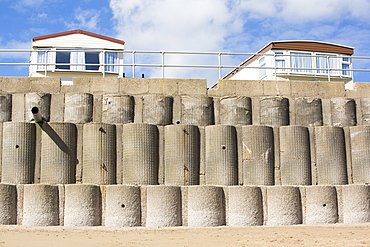
Concrete sea defences at Beach Bank Caravan Park in Ulrome near Skipsea on Yorkshires East Coast, UK. The coast is composed of soft boulder clays, very vulnerable to coastal erosion. This section of coast has been eroding since Roman times, with many villages having disappeared into the sea, and is the fastest eroding coast in Europe. Climate change is speeding up the erosion, with sea level rise, increased stormy weather and increased heavy rainfall events, all playing their part.

A collapsed coastal road at between Skipsea and Ulrome on Yorkshires East Coast, near Skipsea, UK. The coast is composed of soft boulder clays, very vulnerable to coastal erosion. This sectiion of coast has been eroding since Roman times, with many villages having disappeared into the sea, and is the fastest eroding coast in Europe. Climate change is speeding up the erosion, with sea level rise, increased stormy weather and increased heavy rainfall events, all palying their part.
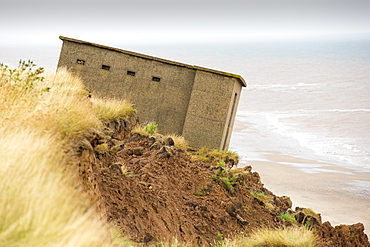
A Second world War lookout post leaning alarmingly and about to tumble over the edge of the cliff near Aldbrough on Yorkshires East Coast, UK. The coast is composed of soft boulder clays, very vulnerable to coastal erosion. This section of coast has been eroding since Roman times, with many villages having disappeared into the sea, and is the fastest eroding coast in Europe. Climate change is speeding up the erosion, with sea level rise, increased stormy weather and increased heavy rainfall events, all playing their part.
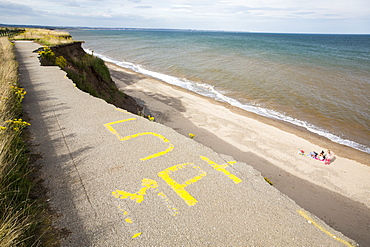
A collapsed coastal road at Barmston on Yorkshires East Coast, near Skipsea, UK. The coast is composed of soft boulder clays, very vulnerable to coastal erosion. This sectiion of coast has been eroding since Roman times, with many villages having disappeared into the sea, and is the fastest eroding coast in Europe. Climate change is speeding up the erosion, with sea level rise, increased stormy weather and increased heavy rainfall events, all palying their part.
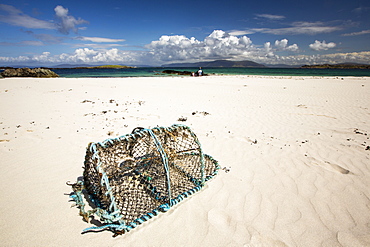
White sand beaches and clean seas on the north coast of Iona, off Mull, Scotland, UK, with a lobster pot washed ashore.
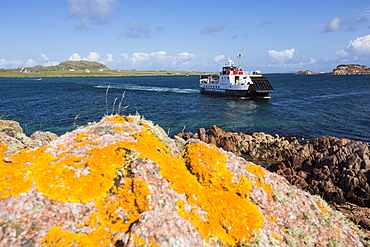
Lichen covered granite boulders at Fionnphort Isle of Mull, Scotland, UK, looking towards Iona, with the Iona ferry.
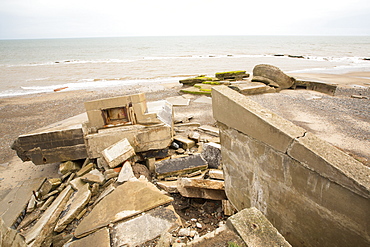
The Remains of the Godwin battery on the beach at Kilnsea at the head of Spurn point on Yorkshires East Coast, UK. Initially constructed during the First World War, the Godwin Battery was added to during the Second World War. It comprised of gun emplacements, search light, barracks, officers’ mess, and a hospital. This section of coastline is the fastest eroding coastline in Europe. The soft boulder clay cliffs are easily eroded and have been eroding since Roman Times, but recently the climate change impacts of increased stormy weather, increased heavy rainfall events and sea level rise have accelerated the rate of erosion. The average rate of attrition is 1.5metres per year, last year it was 5 metres.
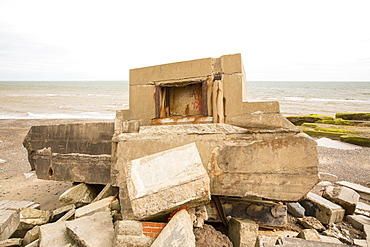
The Remains of the Godwin battery on the beach at Kilnsea at the head of Spurn point on Yorkshires East Coast, UK. Initially constructed during the First World War, the Godwin Battery was added to during the Second World War. It comprised of gun emplacements, search light, barracks, officers’ mess, and a hospital. This section of coastline is the fastest eroding coastline in Europe. The soft boulder clay cliffs are easily eroded and have been eroding since Roman Times, but recently the climate change impacts of increased stormy weather, increased heavy rainfall events and sea level rise have accelerated the rate of erosion. The average rate of attrition is 1.5metres per year, last year it was 5 metres.

Rocks inscribed with Chinese characters at Tianya-Haijiao Tourist Zone, Sanya, Hainan Island, China, Asia
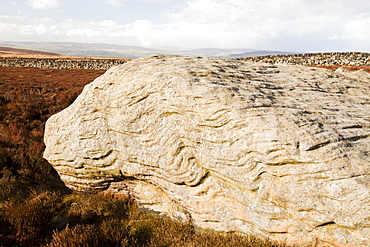
The Thimble Stones, millstone grit boulders near the summit of Ilkley Moor, West Yorkshire, England, United Kingdom, Europe

Rocks inscribed with Chinese characters at Tianya-Haijiao Tourist Zone, Sanya, Hainan Island, China, Asia

A boulder of millstone grit on Ilkley moor with a perfect circular hole probably formed by a large inclusion weathered out of the bedrock, West Yorkshire, England, United Kingdom, Europe
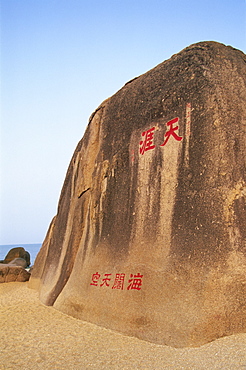
Rocks inscribed with Chinese characters at Tianya-Haijiao Tourist Zone, Sanya, Hainan Island, China, Asia
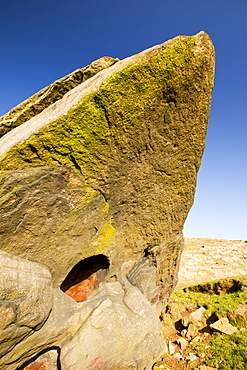
A boulder of millstone grit on Ilkley moor with a perfect circular hole probably formed by a large inclusion weathered out of the bedrock, West Yorkshire, England, United Kingdom, Europe

Rocks inscribed with Chinese characters at Tianya-Haijiao Tourist Zone, Sanya, Hainan Island, China, Asia

A frozen Stickle Tarn with crack patterns in the ice, above the Langdale valley with Pavey Ark in the background, Lake District, Cumbria, England, United Kingdom, Europe
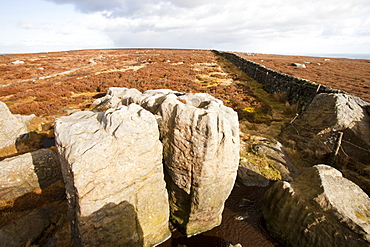
The Thimble Stones, millstone grit boulders near the summit of Ilkley Moor, West Yorkshire, England, United Kingdom, Europe
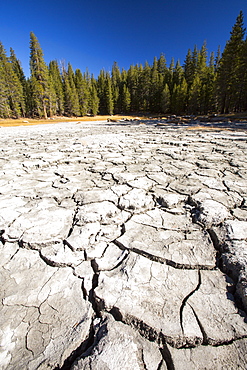
A drought impacted lake in Yosemite National Park, California, USA. Most of Califoprnia is in exceptional drought, the highest classification of drought.
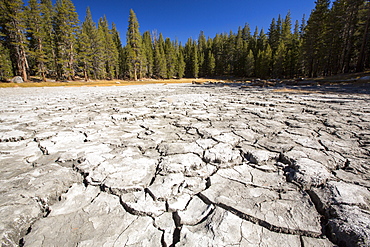
A drought impacted lake in Yosemite National Park, California, USA. Most of Califoprnia is in exceptional drought, the highest classification of drought.
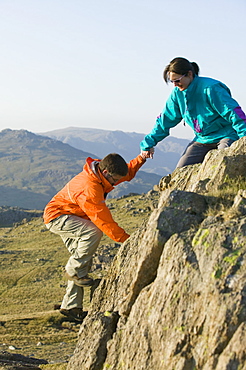
A man and women scrambling on Great Carrs in the Lake District National Park, Cumbria, England, United Kingdom, Europe
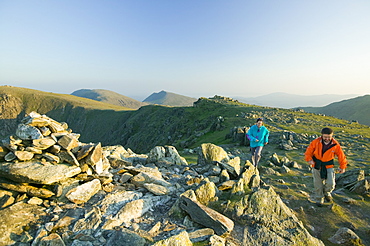
A man and women fell running on Great Carrs in the Lake District National Park, Cumbria, England, United Kingdom, Europe
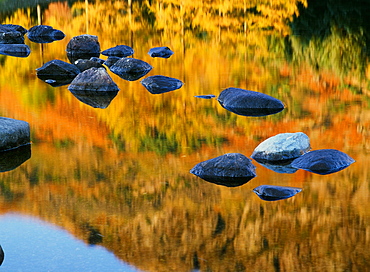
Reflections in Blea Tarn in the Lake District National Park, Cumbria, England, United Kingdom, Europe

Snow on the stepping stones across the River Rothay in the Vale of Rydal in the Lake District, Cumbria, England, United Kingdom, Europe
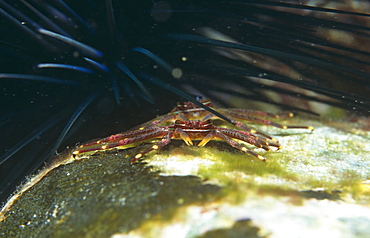
Sally lightfoot crab (Percon gibbesi), on coral boulder with sea urchin spines behind, Cayman Brac, Cayman Islands, Caribbean.
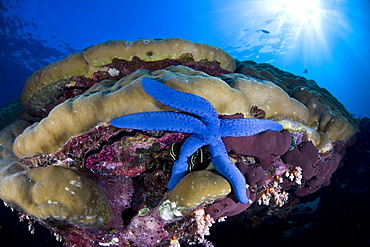
Blue seastar, Linckia laevigata, hanging on a boulder coral, Porites sp. Buyat Bay, North Sulawesi, Indonesia, Pacific Ocean.
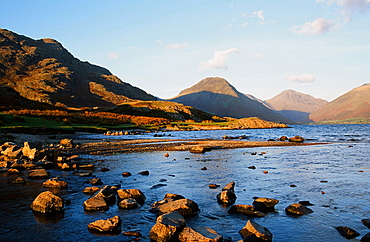
Yewbarrow and Great Gable from Wastwater in the Lake District National Park, Cumbria, England, United Kingdom, Europe
